The Green Mountain Goatsuckers mixed it up this spring, opting for a new approach and venue. We took a break from the Upper Valley and our traditional human-powered means of locomotion, migrating upstate to Vermont’s fabled birding mecca – the Northeast Kingdom. The region’s spruce-fir forests and boreal birds proved an irresistible lure. We decided to concentrate on Essex and Orleans counties, and we made a key strategic move by enlisting the Kingdom’s foremost birding guru, Tom Berriman, as our local guide.
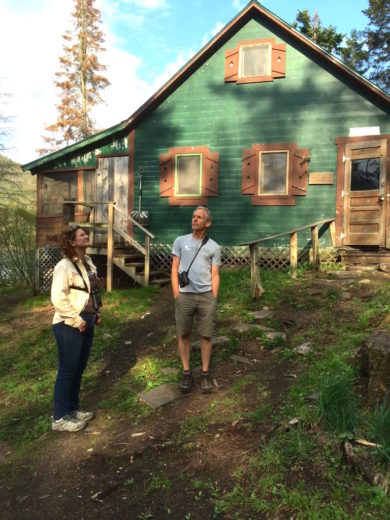
Susan Hindinger and Chris Rimmer listening for the first birds at Wheeler Pond camp. / © Steve Faccio
The clock began ticking at 5 pm on 25 May, the moment Steve Faccio, Susan Hindinger, and Chris Rimmer arrived at a rustic Green Mountain Club cabin on Wheeler Pond. Reduced to a skeleton crew by the myriad commitments of other VCE staff, we had arranged to meet Kent McFarland here and spend the evening birding Orleans County, then roll out our sleeping bags and meet Tom in Lyndonville at 4:30 am. The site proved a solid starting point, with its extensive mixed northern hardwoods-conifer forests and shrub-cattail shoreline. American toads and spring peepers were in full voice, and we quickly picked up ~25 species, including singing Blue-headed Vireo, Brown Creeper, Northern Parula, and Purple Finch. We heard, but never glimpsed, the trip’s only Peregrine Falcon, calling in flight. Heading north, we stopped at Crystal Lake to find a Common Loon and distant flock of 4 ‘peep’ sandpipers (probably a Least). Downtown Barton yielded Chimney Swifts, while May Pond and its extensive grasslands produced an Osprey, numerous displaying Wilson’s Snipe, and a singing Savannah Sparrow (but no Eastern Meadowlark). On to Orleans, we followed the Barton River north of town. Wetlands here were very productive, highlighted by a pair of calling Pied-billed Grebes, a calling American Bittern whose antics entertained us through a spotting scope, and a Virginia Rail. No Common Gallinule or Marsh Wren, but no complaints. We ended our evening at Parker Pie in W. Glover – a must stop for any pizza lover visiting the NEK.
Back at Wheeler Pond, a Barred Owl called several times before we turned in for the night for just a few hours, facing a 3:45 am wake-up call. Coffee brewed outside in the emerging dawn fueled us for our 30-minute drive to Lyndonville. Here we met Tom, who had been up since 1 am conducting his annual Eastern Whip-poor-will survey, finding 6 WHIPs, a Northern Saw-whet Owl, and an American Woodcock! His strategic recommendation that we spend our first hour of good light walking an abandoned railroad bed near Miles Pond in North Concord was spot-on. We were treated to a rich dawn chorus, with an unusual mix of ‘southern’ and ‘northern’ birds. Singing Wood Thrushes, Veeries and Black-throated Blue Warblers provided counterpoint to an assortment of Winter Wrens, Northern Waterthrushes, Nashville-Magnolia-Canada Warblers, and the day’s only Bay-breasted and Mourning Warblers. We left with nearly 75 species under our belt, and a fine preview of the boreal habitats to come.
Next on our itinerary was Victory Bog, where we racked up key species along the road and on Roger’s Creek Trail. As the day heated up, black flies and butterflies began to emerge, but the late spring songbird chorus was in full swing. Close looks at a family of Red Crossbills foraging for roadside grit elicited oohs and aahs. Steve Faccio spotted a leucistic female American Redstart gathering nest material along the road. Along the trail, we found our only Turkey Vulture and Broad-winged Hawk, an Olive-sided Flycatcher singing its ‘quick-three-beers’ song, 3 Yellow-bellied Flycatchers ‘che-leking’, the day’s only Swainson’s Thrush, a singing Palm Warbler, a flock of 30 noisy White-winged Crossbills in flight, and a single Pine Siskin overhead. Across the road on the Blowdown Trail, Tom led us to a Black-backed Woodpecker nest he had recently found – the incubating (or brooding) male made a brief appearance to confirm his identity to us onlookers.
From Victory, with >100 species tallied, we slogged over to Route 102 along the Connecticut River. Our first stop in Guildhall yielded a decidedly rare bird for Essex County, located several days earlier by Tom – Willow Flycatcher. We also found the day’s only Brown Thrasher and our first Bank Swallow, the latter literally knocked out of the air by a feisty Eastern Kingbird, and then picked up by Kent, removing any doubt about its ID! Driving north along Rt. 102, we picked up a few key species, including Solitary Sandpiper, Black-billed Cuckoo, and Pine Warbler. After lunch in Stratford, NH, we headed west along Rt. 105, adding a drive-by sighting of a >50-burrow Bank Swallow colony in a Brunswick gravel pit. Arriving at Moose Bog at ~2 pm, temperatures in the mid-80sF and only one of the ‘boreal grand slam’ species under our belt, we were definitely pushing our luck.
Before venturing into the relatively cool spruce-fir forest, we walked to the alder wetland on S. America Pond Road and had the good fortune to find a male Rusty Blackbird. We then walked leisurely along the main Moose Bog trail, where Tom often sees male Spruce Grouse performing on their mating ‘leks’. We were a week or more past peak courtship and never spied a bird. However, a confiding family of Gray Jays – 2 adults and 3 juveniles in their slaty, soft plumage – paid us an extended visit at extremely close range. With those two species punctuating a memorable day, and the end of our 24-hour Birdathon period approaching, we called it quits, more than pleased to have chalked up 112 species in a region that is arguably Vermont’s most pristine and ecologically distinctive.
Birdathon Results
See the full list of species found by the Green Mountain Goatsuckers during Birdathon 2016.
Here is a list of butterflies we found and added to eButterfly for the Vermont Butterfly Big Year:
- Canadian Tiger Swallowtail
- Mustard White
- Green Comma
- Northern Spring Azure
- Clouded Sulphur
- Eastern Pine Elfin
And here’s a bit of the other biodiversity we photographed and added to iNaturalist Vermont.
More Photos from Birdathon
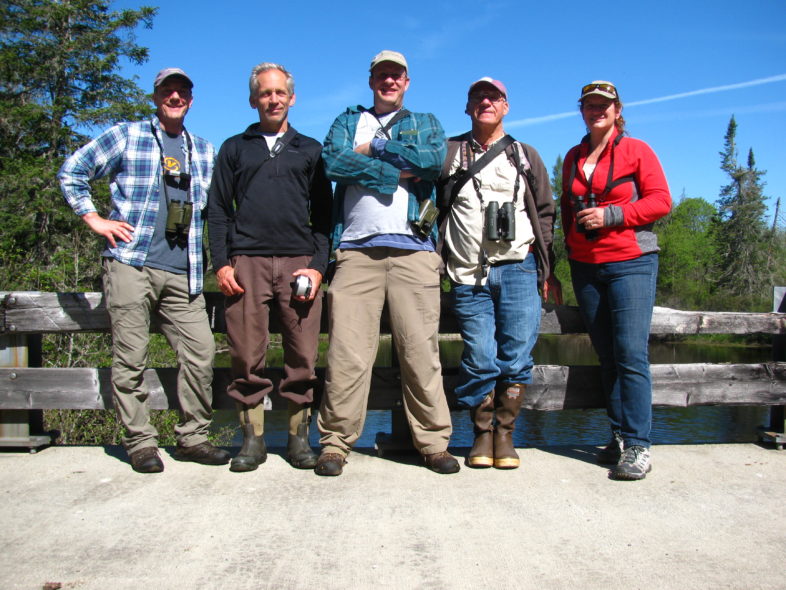
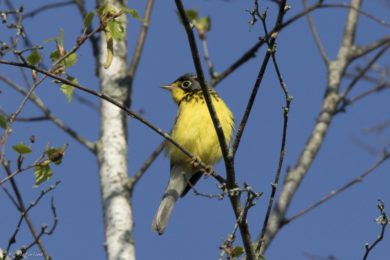
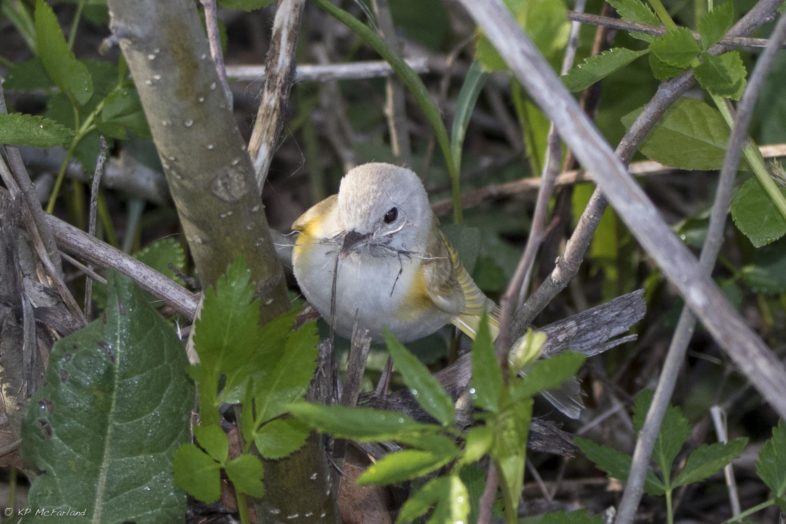
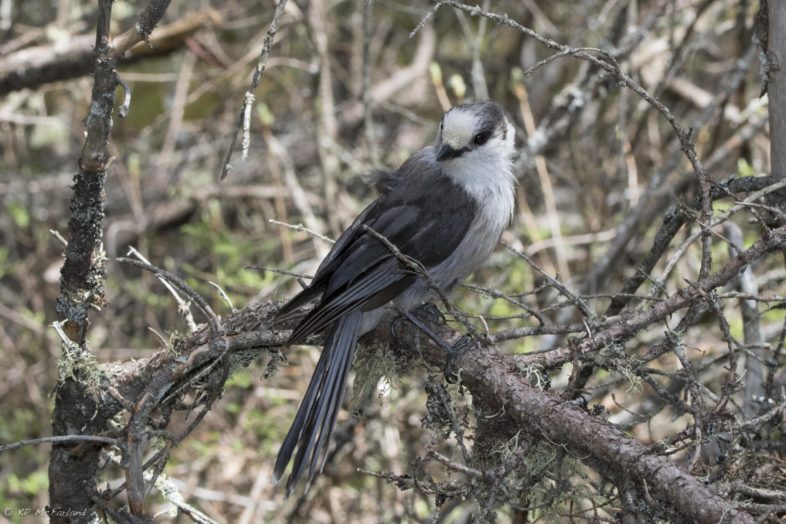
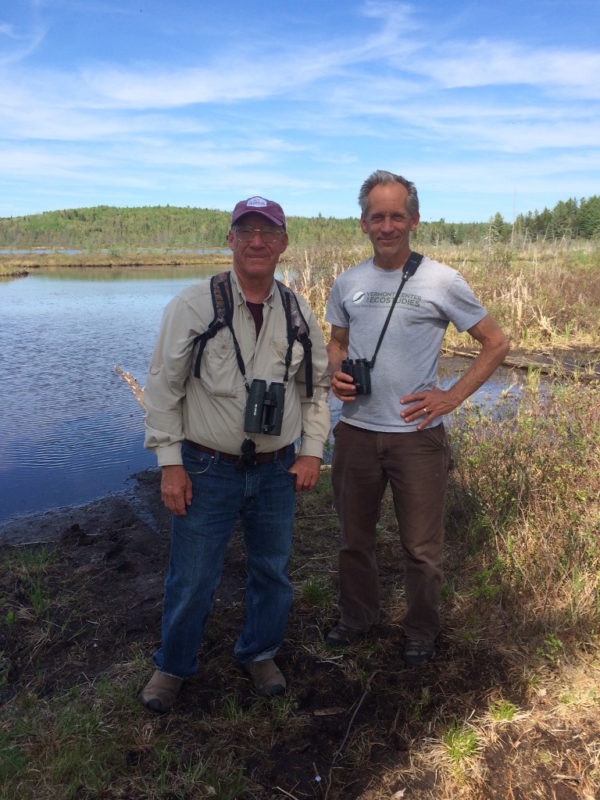

WHAT fun for a ‘change up’ bird-a-thon! Well done and great report.
Glad I didn’t sign on as a sponsor for your team!